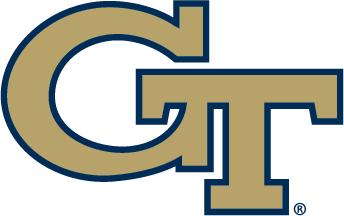Sept. 24, 2014
By Adam Van Brimmer/Buzz Magazine
– Re-published from the Fall 2014 issue of the Buzz magazine
Bryan Cook scrutinizes Georgia Tech’s quarterbacks closely. As the assistant coach charged with teaching the finer points of head coach Paul Johnson’s option offense — proper footwork and ball-handling, reads, tempo — Cook’s eye for detail is as sharp as an upfield cut.
Cook ignores one aspect others might look for, though. He doesn’t bother watching for that “ah ha” moment, when all the techniques, film work and practice field repetitions click for the expectant quarterback.
“The light comes on gradually, not suddenly, with the option,” Cook said. “You see guys getting better at it, at different segments of the play, and when they get to the point where there is no hesitation from one piece to the other, you get excited about that. But one segment tends to build on another, and you can’t expect progress overnight.”
Teaching the option requires equal parts persistence and patience along with constant assessment. Johnson has spent three decades, including the last six years at Georgia Tech, honing and perfecting his version of the triple option, a variant of the wishbone with the two halfbacks positioned close to the line of scrimmage just outside the tackles rather than in the backfield behind the quarterback.
Cook is in his second year coaching Johnson’s option, although he spent four years teaching a hybrid offense, a mixture of a similar scheme and the spread utilized by Oregon, Auburn, Ohio State and others, at Cal Poly prior to coming to Georgia Tech. Cook will help projected starter Justin Thomas and reserves Tim Byerly and Matthew Jordan slowly master one of the most explosive offenses in college football.
“The option looks so clean, so fluid on film, then you get under center and it’s not,” said Thomas, who is in his third year in the system and averaged 7.1 yards per carry in limited playing time in 2013. “It happens really fast and getting comfortable with it requires good coaching and plenty of reps.”
It’s about changing the scoreboard
Learning the option at Georgia Tech requires many quarterbacks to unlearn much of what they already know about the position.
The option is en vogue at almost every level of football these days. Yet the scheme of overwhelming choice is the so-called read option, run from a shotgun formation. The quarterback lines up five yards deep, takes a shotgun snap and reads his defensive keys–whether the defensive end is rushing upfield or inside, whether the safety or outside linebacker is hedging toward the running lanes outside the tackle.
Johnson’s offense requires quarterbacks to read the same keys but is more complex in other ways. The quarterback takes the snap from under center, allowing the offense to get downfield much more quickly but requiring precise timing, ballet-like footwork and ball-handling skills to rival Chris Paul’s.
Cook has his quarterbacks start from the beginning with the snap cadence. Most plays call for an A-back to go into motion before the snap, and the quarterback must understand that halfback is in the proper position before calling for the ball.
The snap is another test, Thomas said.
“The footwork was and still is my main challenge,” said Thomas, who ran the shotgun spread in high school. “You have to get the snap when you are thinking about making the read and getting into the proper position. You have to accept that you’re never going to be perfect all the time.”
Perfection is the goal, however, as the option is all but unstoppable when executed properly. Unlike a passing-oriented offense — in which every time the quarterback throws the ball only three things can happen, and two of those are bad — the option is not a risk-reward scheme. Done well, most plays produce at least a short gain. And every play has the potential to go for a touchdown. The option isn’t about moving the chains, it’s about changing the scoreboard.
“You have so many threats on every snap with this offense,” Thomas said. “It all happens so fast you don’t have time to think about, so imagine what it’s like for the defense. The next thing you know you are running down the field.”
Brace for impact
For all the skills required of an option quarterback, reaction time is the most valuable, Cook said. A defensive back during his playing career, Cook understands the quarterback’s game-changing potential.
“It is the one position where you can touch every component of the game,” Cook said. “And in the option, if your quarterback is talented and can play at top speed, he can make a tremendous impact.”
Cook is shepherding several impact players this fall. Thomas is the quickest and fastest quarterback he’s ever coached, and Byerly has a toughness his head coach, Johnson, compares to that of former option star Joshua Nesbitt. Cook also coaches the B-backs and the staff expects a big season from Zach Laskey.
Johnson remains the offensive coordinator, taking the lead in game-planning and calling the plays on game day, and promises to “get back to our roots a little more” this fall after experimenting with spread formations and concepts in 2013.
The offense will need contributions from many to meet Johnson’s expectations. Stars who accounted for more than 60 percent of the Yellow Jackets’ yards, including three of the top-four rushers, and more than half their points in 2013 are no longer at Georgia Tech.
Thomas and his peers understand the situation. Thomas described this season as one of “opportunity” and said Cook’s approach to coaching reflects that view.
“There is a sense of urgency, but we’ve been in the system long enough there should be,” Thomas said. “Coach Cook makes sure you understand what you are doing. You do something wrong, he’s going to correct you. His expectations are understandably high.”









